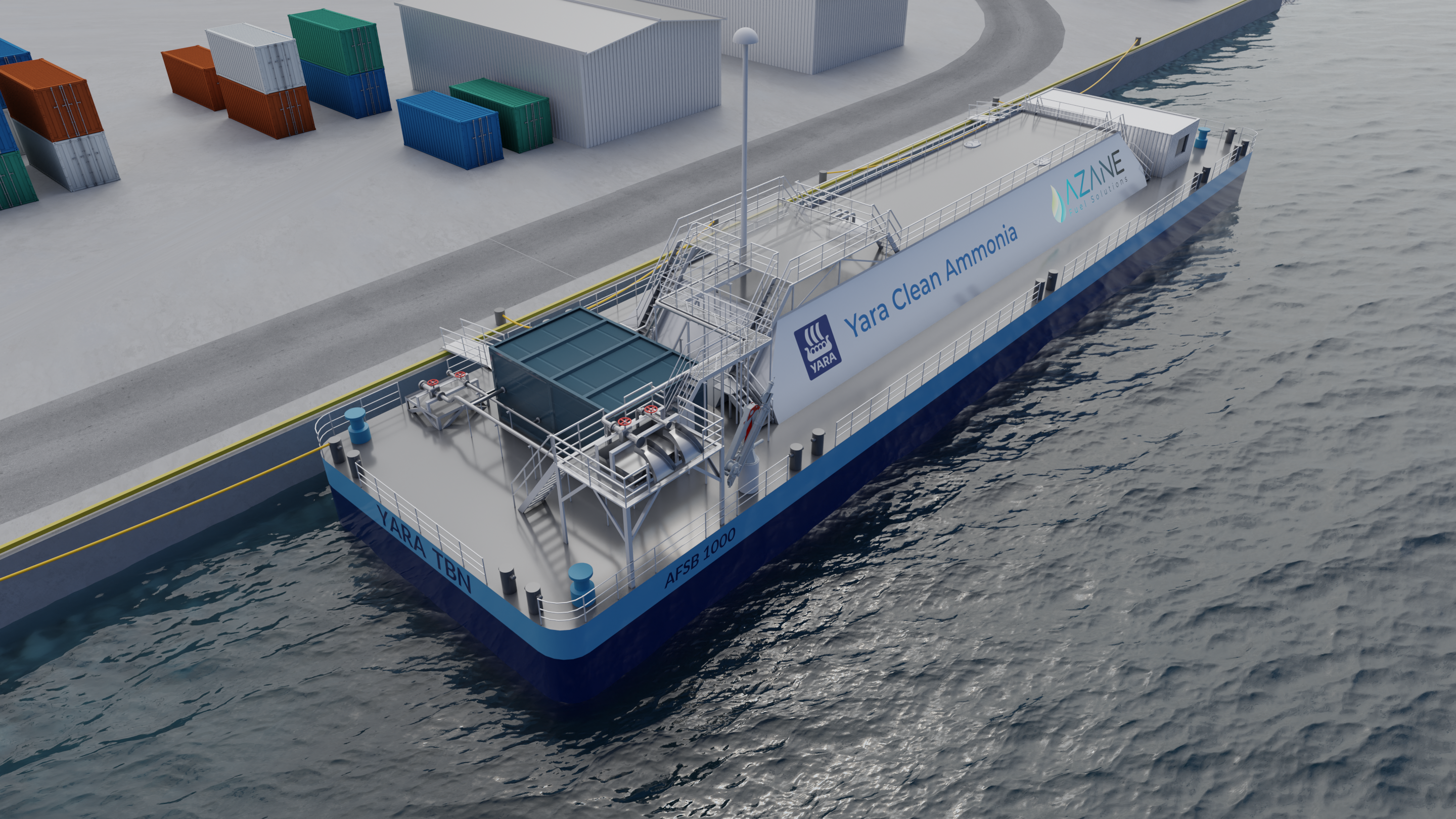
Taking on ammonia
The bunkering terminals that will be required for the widespread use of ammonia as a marine fuel are starting to emerge
Classification society DNV has given Approval in Principle (AIP) to Azane Fuel Solutions for an ammonia ship bunkering and cargo loading station
December 14, 2022
Azane says the AIP is an important step in further verifying readiness for the commercialisation of its proprietary ammonia bunkering terminals prior to commencing construction. The first 1,000 cubic metre bunkering terminal is scheduled for operation in 2024. According to Azane, the ammonia bunkering terminals can be delivered worldwide and “are designed to suit the global market”.
The company says the AIP fits within a larger strategy for the company of forging a new safety protocol for ammonia bunkering in Northern Europe, with plans to expand safe ammonia bunkering globally.
Last year the Azane shareholders, Amon Maritime and ECONNECT Energy, received support from Norway’s Green Initiative program for the Ammonia Fuel Bunkering Network, along with consortium partners. In April 2022, the company announced that Yara had pre-ordered up-to 15 units to sufficiently cover the Scandinavian market with ammonia bunkering infrastructure.
Following the granting of the AIP, Azane and Yara will initiate an approval process with DSB (Norwegian Directorate for Civil Protection) to establish several ammonia bunkering locations in Norway and Scandinavia.
In a related development, Amon Maritime a set up a new offshore support operating company, Amon Offshore. The company has been created to build, own and operate a fleet of ammonia-powered supply ships for the Norwegian continental shelf. The ammonia fuel will be provided by Azane Fuel Solutions and Yara Clean Ammonia.
The Norwegian government has stated that all PSVs on the Norwegian continental shelf must emit no greenhouse gas (GHG) emissions by 2030. This requires approximately 80 newbuilds or significantly modified/rebuilt PSVs to be delivered between 2025-2030. Amon says this will be a “massive boost for innovation and value creation in the maritime industry”.
Amon says its PSV has been developed for full compliance with 2030 requirements, offering carbon free operations with best-in-class energy efficiency. It adds that Amon Offshore is working closely with clients to obtain charter contracts, enabling the first ships to be delivered in 2025.
Meanwhile Yara Clean Ammonia has engaged Lloyd’s Register (LR) to undertake feasibility studies into using clean ammonia to refuel ships in the Pilbara region of Western Australia. This follows the signing of a collaboration agreement in August between Yara and Pilbara Ports Authority (PPA).
LR is to provide analysis focusing on key factors needed to assess the potential uptake of ammonia bunkering. The feasibility study will comprise the market for clean fuels in shipping; shore side infrastructure requirements; safety considerations and the regulations required to support ammonia bunkering at Pilbara ports. The study is expected to take at least 12 months.
Last month, the final investment decision was announced for Project Yuri, which will see a renewable hydrogen plant built adjacent to the Yara Pilbara’s existing ammonia plants close to PPA’s Dampier port. The Yuri plant is expected be one of the first globally to demonstrate the use of renewable hydrogen as a feedstock to produce ammonia at an existing ammonia plant, and is the first project of its kind in Australia.
In a separate development ClassNK has issued an AIP for an ammonia bunkering vessel developed by NYK Line.
The company has developed its own design drawings, and introduced a method of creating 3D models linked to the drawings at an early stage of concept design, which is typically done at the detailed design stage after the shipbuilding contract, enabling it to draw up specifications that incorporate sufficient safety measures for ammonia hazardous areas and escape routes based on risk assessments.
ClassNK carried out the review of the design being developed by NYK Line in line with its Part N of Rules for the Survey and Construction of Steel Ships incorporating the IGC Code.
Get in touch
Contact one of the World Bunkering team.
Constructive Media
Constructive Media
50 George Street,
Pontypool
NP4 6BY
Tel: 01495 740050
Email: ibia@constructivemedia.co.uk
On behalf of :
IBIA Ltd
107 Cheapside
London
EC2V 6DN
United Kingdom
Tel: +44 (0) 20 3397 3850
Fax: +44 (0) 20 3397 3865
Email: ibia@ibia.net
Website: www.ibia.net
Emails
Publisher & Designer: Constructive Media - ibia@constructivemedia.co.uk
Editor: David Hughes - anderimar.news@googlemail.com
Deputy Editor: Unni Einemo - unni@ibia.net
Project Manager: Alex Corboude - alex@worldbunkering.net
Terms & Conditions | Copyright © 2022 World Bunkering
